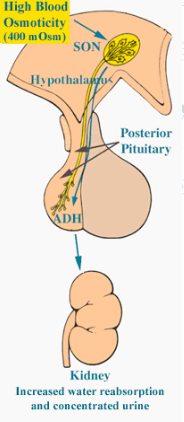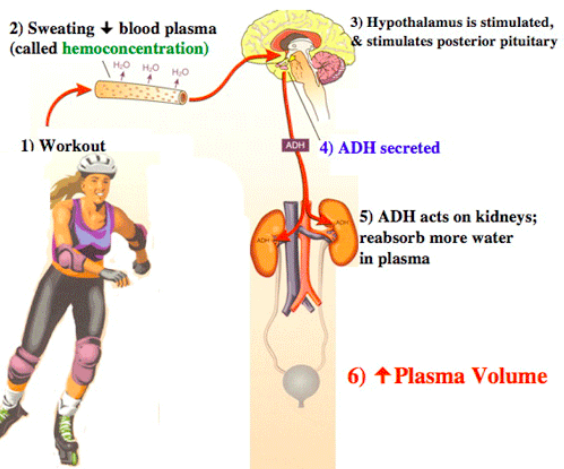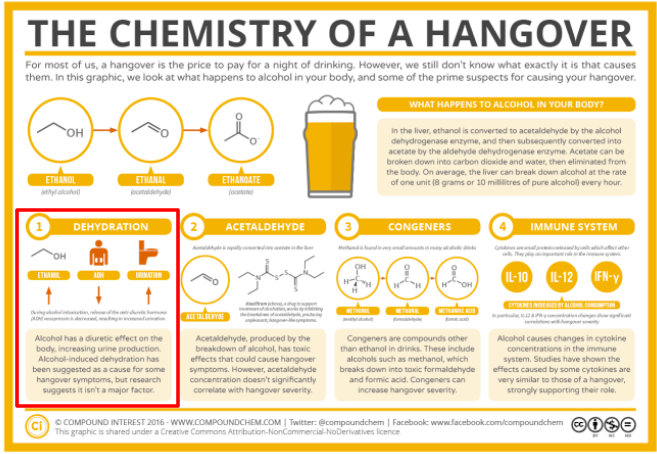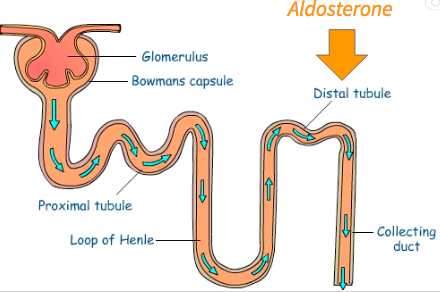Requirements of the body and conditions under which the body works is not constant. Therefore, the functioning of the urinary system cannot be constant!
- You kidneys help maintain water balance in your body (part of homeostasis)
- Two hormones are needed: ADH and Aldosterone!
First of all:
- Diuretic – Anything that increases urine production
Natural Examples: Alcohol, sativa, caffeine, dandelion
- Antidiuretic – Anything that reduces urine production
Natural Examples:Licorice, Potatoes
Antidiuretic Hormone (ADH)
- Secreted by posterior pituitary gland in response to lower blood volume (remember the hypothalamus screens the blood and determines control of pituitary gland)

- Hormone binds to receptor sites on collecting ducts.
- Increases permeability to water -> more water reabsorbed into blood
- Combats low blood volume, low blood pressure.


- Dehydration causes ADH to work on this pathway, but also causes special cells in the hypothalamus to shrink which triggers a thirst response
- Alcohol is a diuretic because it stops ADH production.

Aldosterone
- Also helps return water to the blood.
- Released from adrenal cortex (top of adrenal gland on kidney) when blood pressure drops
- Receptors in blood vessels near start of nephron notice pressure drop.
- This starts a chain reaction which ends with aldosterone release
- Usually in response to low Na+ concentration.
Brief note:
Aldosterone is increased based on low Na+ – ADH decreases!
Likewise, ADH is increased with low blood volume, Aldosterone descreases!
- Aldosterone increases the amount of Na+ reabsorbed at the distal convoluted tubule.
- Therefore, Na+ retention in plasma increases.
- Water will passively get reabsorbed as well, increasing blood pressure (through an increase in blood volume) and concentrating urine

Summary:
- Dehydration = bad
- Low blood volume is assessed by hypothalamus.
- Posterior pituitary releases ADH
- ADH – binds to collecting duct, more water reabsorbed into blood.
- Low blood pressure – measured by receptors near nephron
- Chain reaction causes release of aldosterone from adrenal gland
- Increase Na+ reabsorption here
- Water is reabsorbed due to this.
Comments by shaun pletsch